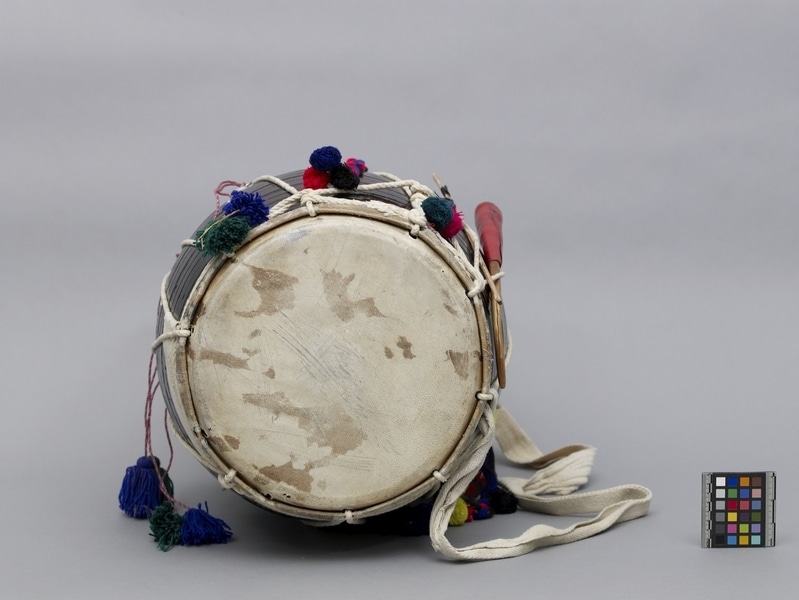Drum Item Number: 2752/1 a-c from the MOA: University of British Columbia



Description
Barrel-shaped brown drum (a) with wide woven strap has stretched white goat skin held in place over each end with wood hoops. White rope laced between the two skins in a zigzag has attached metal rings from which hang bundled, twisted or braided strands of yellow, blue, red, black, green and pink fibre with tassels and pompoms at the ends. Two drumsticks, one a polished piece of wood with curved handle and padded red leather top (b), the other a simple painted stick with black tape near one end (c), are stuck between the lacing.
History Of Use
The dhol is a double-sided barrel drum played with two sticks that dates back to the 15th century, and was probably introduced to the Indian subcontinent via the Persian drum type dohol. The dhol is most commonly associated with Punjabi Bhangra music and dance and was used in war by the Sikhs and later to celebrate successful harvests by Jatt landowners. The Dhol drum is a very common instrument played in the regions of Punjab in India and Pakistan, and from North India, spread to other parts of the Indian subcontinent.
Item History
- Made in India
- Owned by The Deepak Binning Foundation before July 31, 2009
- Received from The Deepak Binning Foundation (Donor) on July 31, 2009
What
Who
- Culture
- Punjabi
- Previous Owner
- The Deepak Binning Foundation
- Received from
- The Deepak Binning Foundation (Donor)
Where
- Holding Institution
- MOA: University of British Columbia
- Made in
- India
When
- Ownership Date
- before July 31, 2009
- Acquisition Date
- on July 31, 2009
Other
- Condition
- fair
- Current Location
- Case 106
- Accession Number
- 2752/0001 a-c